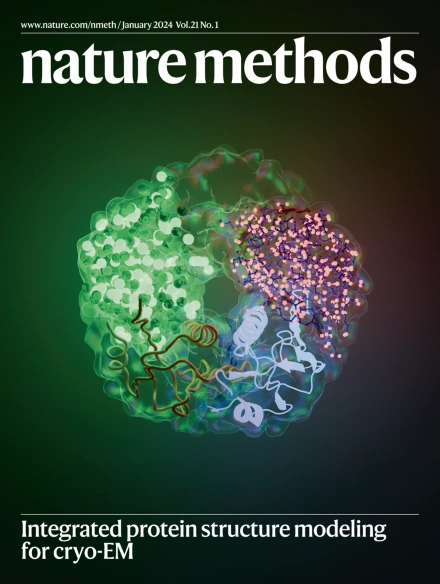Quality control for single-cell analysis of high-plex tissue profiles using CyLinter
IF 36.1
1区 生物学
Q1 BIOCHEMICAL RESEARCH METHODS
引用次数: 0
Abstract
Tumors are complex assemblies of cellular and acellular structures patterned on spatial scales from microns to centimeters. Study of these assemblies has advanced dramatically with the introduction of high-plex spatial profiling. Image-based profiling methods reveal the intensities and spatial distributions of 20–100 proteins at subcellular resolution in 103–107 cells per specimen. Despite extensive work on methods for extracting single-cell data from these images, all tissue images contain artifacts such as folds, debris, antibody aggregates, optical aberrations and image processing errors that arise from imperfections in specimen preparation, data acquisition, image assembly and feature extraction. Here we show that these artifacts dramatically impact single-cell data analysis, obscuring meaningful biological interpretation. We describe an interactive quality control software tool, CyLinter, that identifies and removes data associated with imaging artifacts. CyLinter greatly improves single-cell analysis, especially for archival specimens sectioned many years before data collection, such as those from clinical trials. Microscopy artifacts and tissue imperfections interfere with single-cell analysis. CyLinter software offers quality control for high-plex tissue profiling by removing artifactual cells, thereby facilitating accuracy of biological interpretation.

使用 CyLinter 对高复合组织图谱进行单细胞分析的质量控制。
肿瘤是细胞和无细胞结构的复杂组合,其空间尺度从微米到厘米不等。随着高倍空间谱分析技术的引入,对这些组合的研究取得了显著进展。基于图像的分析方法能以亚细胞分辨率揭示每个样本 103-107 个细胞中 20-100 种蛋白质的强度和空间分布。尽管在从这些图像中提取单细胞数据的方法方面做了大量工作,但所有组织图像都含有伪影,如褶皱、碎屑、抗体聚集、光学畸变和图像处理误差,这些都是由于标本制备、数据采集、图像组装和特征提取过程中的不完善而造成的。在这里,我们展示了这些伪影对单细胞数据分析的巨大影响,它们遮蔽了有意义的生物学解释。我们介绍了一种交互式质量控制软件工具 CyLinter,它能识别并移除与成像伪影相关的数据。CyLinter 能极大地改进单细胞分析,尤其是对数据采集前多年切片的档案标本,如临床试验中的标本。
本文章由计算机程序翻译,如有差异,请以英文原文为准。
求助全文
约1分钟内获得全文
求助全文
来源期刊

Nature Methods
生物-生化研究方法
CiteScore
58.70
自引率
1.70%
发文量
326
审稿时长
1 months
期刊介绍:
Nature Methods is a monthly journal that focuses on publishing innovative methods and substantial enhancements to fundamental life sciences research techniques. Geared towards a diverse, interdisciplinary readership of researchers in academia and industry engaged in laboratory work, the journal offers new tools for research and emphasizes the immediate practical significance of the featured work. It publishes primary research papers and reviews recent technical and methodological advancements, with a particular interest in primary methods papers relevant to the biological and biomedical sciences. This includes methods rooted in chemistry with practical applications for studying biological problems.
 求助内容:
求助内容: 应助结果提醒方式:
应助结果提醒方式:


